O-2080 • totem pole
Specifications
| Artists | Rufus Moody (sculptor) |
|---|---|
| Date | 1962 |
| Signature | Rufus Moody |
| Inscriptions |
Rufus Moody II
|
| Materials | stone, argillite • shell |
| Dimensions (cm) | 17.0 (Length) • 17.0 (Width) • 120.0 (Height) |
| Functions | Ceremonial artifact |
| Barcode | 603368 |
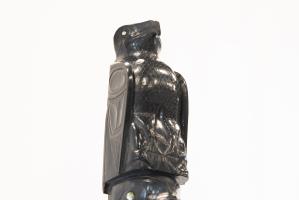
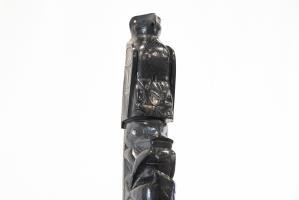
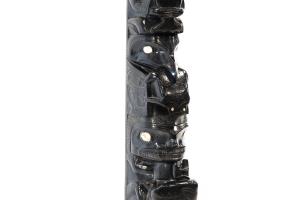
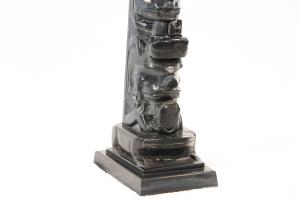
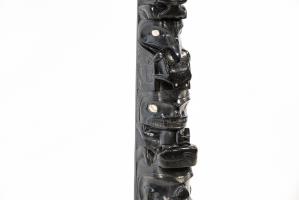
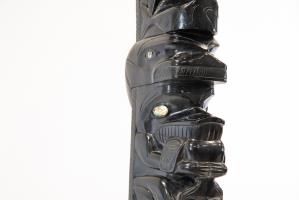
Rufus Moody
Rufus Moody was born in 1923, in Skidegate on Haida Gwaii (Queen Charlotte Islands) in British Columbia. His father and grandfather were renowned Haida carvers of argillite and Moody’s work reflects the distinctive style developed by his family. Moody created the world’s largest argillite totem pole, which stands six feet tall and is housed at the Museum of Anthropology in Vancouver.
Argillite carving is an art form unique to the Haida, who began innovating with the material in the early 1800s. Initially a response to economic opportunities represented by the arrival of European collectors, it gathered momentum among Haida artists in the latter half of the 19th century. During his lifetime, Moody played a key role in sustaining the practice of argillite carving and was well known for teaching younger artists to work in the medium. Moody was made a Member of the Order of Canada in 1976. He died in Vancouver in 1998.